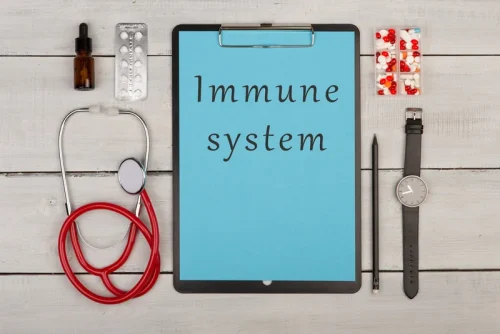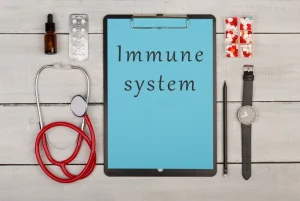Content
By becoming more aware of the triggers in your environment and the behaviors they elicit, you can begin to reshape your responses and cultivate more intentional, constructive habits. In many cases, when you feel “normal” again, you might be overly confident that you can handle being in situations that serve as external triggers. That confidence is one of the most difficult internal triggers to manage. You have to make sure that you prepare yourself with the proper tools and coping methods to avoid being surprised by cravings.
How to Identify and Cope with Common Triggers in Recovery
- Internal triggers aren’t limited to negative emotions; even positive emotions, like the thrill of success, can act as triggers 13.
- The key is to be proactive rather than reactive when it comes to situational triggers.
- Asking the right questions and taking the correct steps can enable people in recovery to healthily transition to their normal life without risking a relapse.
- In many cases, when you feel “normal” again, you might be overly confident that you can handle being in situations that serve as external triggers.
- In the process, you will be able to better maintain your abstinence and find it easier for you to recover.
Experiment, observe, and make adjustments as needed to create an ecosystem that supports your goals and desired outcomes. The principles of external triggers aren’t limited to personal growth and self-improvement – they are also widely leveraged in the world of marketing and advertising. Businesses and marketers understand the power of triggers to influence consumer behavior and drive desired actions, such as making a purchase or engaging with a brand. By proactively shaping your environment and leveraging the power of external triggers, you can create a supportive ecosystem that nudges you towards your desired outcomes. This can be particularly effective for building new habits, breaking old patterns, and maintaining motivation and discipline.
Daily Schedule
Our treatment plans are customized for each individual based on their presenting issues. At New Method Wellness, we can help you learn more about marijuana addiction triggers, relapse and addiction. We also provide various forms of holistic therapy that can provide fulfillment and effective coping methods. Learning to identify cravings and triggers is a crucial step in recovery. You also need to learn new ways to cope with the relapse triggers as well as your cravings so that you can overcome them and avoid relapse.
They differ from internal triggers, which are negative emotional states such as anger, fear, or boredom. Being exposed to a trigger does not necessarily mean that a person will immediately resort to using drugs or alcohol. People who have made a commitment to living a sober life will actively fight these urges, but their brain may find ways to justify using the substance once more. Examples of people who can serve as triggers include former drug dealers, spouses, friends, family members, employers and co-workers, and even neighbors. If a person uses drugs to cope with loneliness, feeling this emotion may cause the person to once again crave the substance. Movie scenes that feature drinking or drug use can also be a trigger for some people.
Role of support systems
- But with the right support and resources, individuals can effectively navigate these challenges and continue on their path to recovery.
- If you can find alternative routes to your next destination, try to map out your drive.
- Remember, the key is to approach external triggers with intention and strategic thinking.
- Building resilience is another critical aspect of relapse prevention.
This might involve steering clear of specific locations or individuals that could trigger a relapse. Alternatively, it might require using strategies such as diverting your attention, reaching out for help, or engaging in mindfulness exercises when confronted with a potential trigger. It’s important to take note of these emotions and thoughts so that the person in recovery can be more aware of their internal triggers. This can be done by asking how they felt right before they used addictive substances and how they felt as they were under the influence of the substance. Some places can serve as a reminder of a recovering person’s former lifestyle. Fear, guilt, shame, anger and depression are common internal triggers.
- At Canyon Vista Recovery Center, located in Mesa, Arizona, you will learn the skills needed to gain sobriety.
- Triggers are social, environmental or emotional situations that remind people in recovery of their past drug or alcohol use.
- Developing an understanding of these external triggers and learning effective strategies to cope with them is essential in preventing relapses.
Learning healthy ways to cope with triggers is one of the ways that an individual can make their recovery able to last many years. Research suggests that people who have used drugs in order to mitigate stress in the past are likely to return to this behavior when future stressors arise. This would suggest that someone in recovery could be prone to relapse due to an elevated level of stress in life. Sometimes there are physical things or items that create the desire to use in an individual or otherwise trigger their addiction. The individual should have relapse prevention plans in place to help deal with the potential triggering caused by items they may encounter. This is important because it may not be possible or feasible to avoid them at all times.
What Are Internal and External Triggers?
It is essential to keep in mind that while many triggers result from negative events or experiences, positive events or experiences can also trigger a relapse. When you choose to get treatment at North Georgia Recovery Center, you can rest assured knowing that you will be treated by licensed therapists in our state-of-the-art facilities. Every one of our team members is certified to address and effectively treat the issues that come along with addiction. Internal triggers are emotional and psychological responses that come from within, often sparking cravings or even relapse during recovery. Understanding and addressing these triggers with professional support can strengthen recovery and reduce relapse risks.
In the dance between the seen and unseen influences on our behavior, trigger awareness allows us to take the lead. It empowers us to choreograph our actions with greater intention and purpose, turning the unconscious puppet show of our behaviors into a conscious, self-directed performance. Remember, the goal isn’t to eliminate all triggers – that would be impossible and even undesirable.
It’s understandable to be concerned about relapse after completing a substance abuse treatment program. Triggers may seem to be everywhere, and you might want to isolate yourself to avoid them. If you do relapse because of your triggers, using substances can be deadly. You might go straight to the dose that you’re accustomed to, but your body can no longer handle the same levels of drugs. Agape Treatment Center for substance abuse embraces a universal, unconditional love that transcends, that serves regardless of circumstances. We provide individuals all over the country with the opportunity to achieve the gift of lasting sobriety.
Navigating External Triggers: Recognition and Coping Mechanisms
As you become more attuned to your triggers, you may find that your actions become more intentional, your habits more aligned with your goals, and your life more authentically your own. Imagine you’re walking down a busy street when the aroma of freshly baked bread wafts from a nearby bakery. Suddenly, you find yourself stepping inside, even though you hadn’t planned on buying anything. It’s an external trigger, one of the three main types of behavioral triggers we’ll explore in this article.
If you feel criticized or belittled, you might want to turn to substances to numb those feelings or push them aside. External triggers are factors outside of yourself that make you want to use drugs. These triggers may involve people who influence cravings, such as drug dealers, coworkers, friends, spouses, partners and employers. Even people who are incredibly close to you may act as relapse triggers. That’s one reason that it’s so important for your loved ones to be on board with your recovery.





